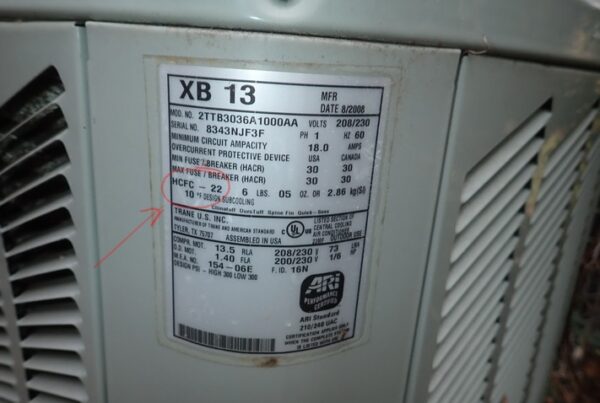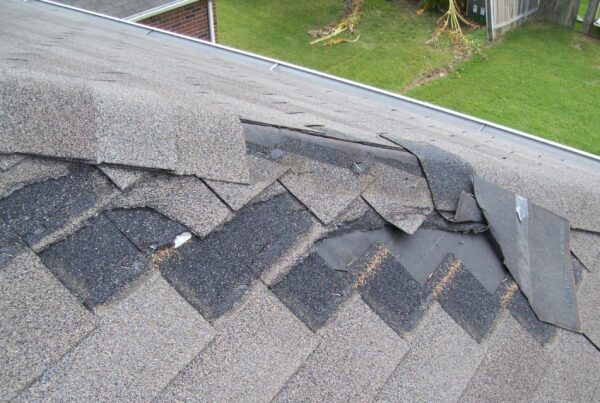This winter has been a particularly brutal one in much of the country, bringing record snowfalls and frequent storms. NABIE’s home base region – the northeast – has seen as many as 6 snowstorms within a 30 day time period. All of this can spell real problems for some buildings.
A bit earlier this winter I visited the Vanderbilt Museum on Long Island as part of an outing with friends. The museum is housed on the grounds of the old Vanderbilt estate and includes a number of older buildings with architectural and historical significance. It also includes more recent structures that house some of the exhibits. One in particular was dedicated to a small exhibit on dinosaurs. During our visit we briefly stopped at the building, but neither the building itself nor the exhibit was particularly distinguished and we moved on.
About two weeks ago while reading one of our regional daily newspapers I came across a news story about the dinosaur exhibit building, including a photograph that clearly depicted the building as a pile of twisted rubble. It seems the building’s roof had collapsed under the weight of accumulated snow. Fortunately no one was injured, but the building and the exhibit were clearly total losses.
As inspection engineers we shape our services to not only provide value to our clients, but to also control risk for ourselves. What might we consider doing as we examine buildings in parts of the country where – as demonstrated this year in particular – accumulated snow and snow loads themselves might deserve careful consideration?
My often-used technique in assessing roofs and their structural support systems was not only based on visual assessment, but usually included a brief analysis of load carrying ability when I returned to the office. While my calculations may not have considered every aspect of a full design analysis, they at least helped me garner a feel for what the roof structure might be capable of under some relatively simple loading conditions. At the very least I had a sense from my analysis of what information might be useful to pass along to my client. In many cases such an analysis clearly indicated that the building roof structure did not comply with currently cited code values. Older buildings may not need to comply with such values, but the analysis helped underscore to my client possible deficiencies and problems that may arise in the future.
Gravity loads from snow can also affect other building structural components such as balconies and decks. So in considering snow during inspection engineering work these areas also should be considered. Needless to say, knowing the parts of the subject building affected by snow is important, but also knowing the kinds of snow loads experienced in a particular region is equally important. How the building inspection engineer decides to utilize back up data and present conclusions is a matter of professional judgment and contract terms with the client. However, in the majority of instances applicable analytical methods will be those presented in ASCE standards and they can be very useful in arriving at appropriate engineered evaluations of likely performance.
Even if analysis is not a part of your inspection services, there are a number of factors to at least evaluate on an intuitive basis. I submit that doing so at least requires you to have a sense of the ground snow loads experienced for the geographical area in which the building is located.
Next you can begin considering other aspects of the building’s design and use. A flat roof may be impacted by snow accumulation much more than one that is sloped. Some roofs are also in unique exposure situations. Any number of low rise, flat roofed office buildings are constructed in office parks situated in very open and exposed areas. In other situations, terrain, tall trees, and adjoining structures may afford some degree of protection.
Consider thermal aspects of the building’s design. An unheated building, or a building with a very well insulated roof system, is likely to accumulate and retain snow. Older buildings may lose sufficient heat through poorly insulated roof systems to result in mitigating excessive snow build up.
What is the building used for? If large amounts of snow did accumulate and caused structural problems what are the consequences of those problems? Property damage is important to consider, but injury or loss of life has far greater significance.
Some of this year’s winter weather has also produced unusual precipitation conditions. Snow has accumulated and lingered, but then a day of moderate temperatures and rain occurs. It does not get warm enough to significantly melt snow, and the rain actually accumulates on the snow. Occasionally a rapid temperature drop occurs that night, leaving ice atop the snow. Try to consider these rain or ice on snow surcharge effects. They too can boost gravity loading of roofs, balconies, and decks.
Ponding can also occur with rain atop snow. Even if the rainfall can eventually make its way to the roof surface, snow and ice accumulations may prevent drainage allowing water to pond.
Evaluating roof slope is also another important consideration. While more steeply pitched roofs may pose far less accumulated snow risk, flat or very low slope roofs need to be evaluated for instability that can occur from not only the ponding condition discussed earlier, but other partial loading scenarios. Partial loading can relate to simply unbalanced and uneven distribution of snow, or it may be caused by drifted snow. As you study and examine the roof, try to envision likely places for snow drifts to build up, causing intensified loads in a small area. I suspect that the majority of snow induced roof failures occur due to excessive and unbalanced loads occurring in a critical area. Even if done only visually, assess such potential.
Are there roof projections or other appurtenances that can compound the snow load issue? Many flat roof buildings include equipment bulkheads and penthouses, as well as parapets. These can result in unique accumulation issues that should not be ignored.
Similarly, even sloped and peaked roof buildings may tend to accumulate snow in valleys or behind chimneys. Such features cannot be overlooked in an evaluation of a roof for snow load capabilities. Sloped roofs can also shed snow by allowing it to slide and fall. Snow slides can not only impact surfaces on to which they fall, but may also be a hazard to people standing below. Snow slides and ice dams may also damage perimeter roof drainage systems including gutters and downspouts.
A final consideration includes snow loads applied to glazing. Roof structural systems may be sufficiently robust to handle loads related to snow. But as you examine building roof systems also take note of skylights or other glass roof mounted features. Try to consider the result of accumulated snow, ice, or even ponded water in the vicinity of such features. A simple statement in your report of likely problems with these features may be of great benefit to your client.
*This article had been posted in the Winter 2010 edition of The Examiner.


